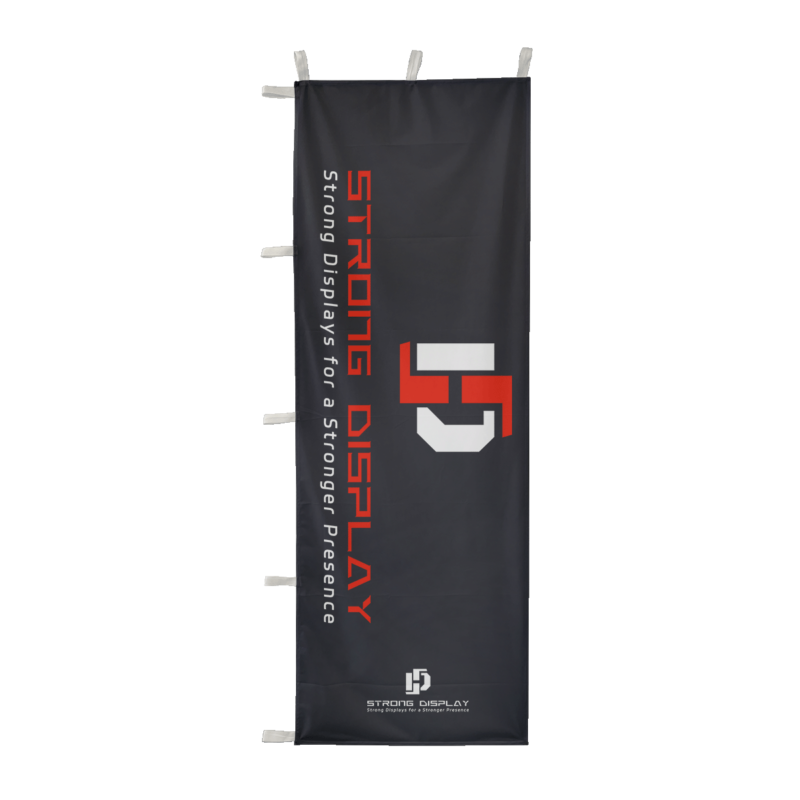Conoscenza
Nobori Flags in the Modern Era: Global Reach and Digital Integration
introduzione
Nobori flags, with their distinctive vertical design and cross-rod ensuring constant visibility, have transcended their traditional role as military banners and local advertisements in Japan.
In the contemporary world, these unique Japanese banners are not only finding new life in global markets but are also adapting to the digital age, merging traditional aesthetics with modern marketing strategies.
This blog post explores the fascinating journey of Nobori flags into the global consciousness and their evolving relationship with digital media.
Globalization and Cross-Cultural Dissemination
Nobori flags, once primarily confined to the Japanese archipelago, are increasingly making their presence felt on the global stage.
Their unique visual appeal and effective design have caught the attention of businesses and cultural enthusiasts worldwide, leading to their adoption and adaptation in various international contexts.
Influence on Global Advertising and Flag Forms
The distinctive vertical format and the mechanism that keeps the Nobori flag unfurled, regardless of wind conditions, offer a clear advantage in outdoor advertising.
This inherent effectiveness has inspired similar vertical banner designs in other cultures. While not always explicitly called ‘Nobori,’ many modern vertical advertising banners seen globally share the core principle of maximizing visual impact in a compact, upright form.
Businesses looking for effective outdoor advertising can take inspiration from this historic flag type, using them to create a strong visual identity and brand presence [1]. The visual impact of these fluttering flags adds not only aesthetic appeal but also a spiritual atmosphere, particularly in cultural events [2].
Nobori in Overseas Markets and Brand Promotion
Japanese businesses expanding into international markets have begun to leverage Nobori flags as a unique branding tool.
By incorporating Nobori into their overseas marketing strategies, companies can evoke a sense of Japanese authenticity and cultural heritage, which can be a significant draw for consumers interested in Japanese culture.
For instance, Japanese restaurants, cultural centers, and even automotive tuning shops outside Japan often use Nobori flags to signal their identity and attract customers. These flags serve as a direct visual link to Japan, differentiating them from competitors and creating an immersive experience for their clientele.
Furthermore, the ease of customization and relatively low cost of producing Nobori flags make them an attractive option for small to medium-sized businesses globally.
Companies specializing in custom flag printing, including those with Japanese roots, are now offering Nobori flag services to international clients, allowing for personalized designs that blend traditional Japanese aesthetics with diverse brand identities.
This cross-cultural adaptation demonstrates the versatility and enduring appeal of the Nobori flag beyond its country of origin [3].
Integration with Modern Digital Media
In an increasingly digital world, traditional marketing tools like Nobori flags might seem out of place. However, their unique visual characteristics and cultural resonance have found surprising synergies with online marketing and social media.
Nobori in Online Marketing and Social Media
The visual distinctiveness of Nobori flags makes them highly shareable content for social media platforms. Businesses often use images and videos of their physical Nobori flags in their online campaigns to create a strong brand identity and to connect with a wider audience.
For example, a restaurant might post a picture of its new Nobori flag advertising a special dish, generating interest and driving foot traffic. Similarly, car enthusiasts and JDM (Japanese Domestic Market) culture followers frequently share images of custom Nobori flags, turning them into viral content within specific online communities [4].
Beyond static images, the dynamic nature of Nobori flags—their gentle swaying in the breeze—can be effectively captured in short video clips for platforms like TikTok or Instagram Reels.
This adds an element of authenticity and visual appeal that can stand out amidst a sea of digital advertisements. The physical presence of a Nobori flag can also serve as a unique backdrop for user-generated content, encouraging customers to share their experiences and further amplify a brand’s online presence.
Virtual Nobori Flags and Digital Adaptations
The concept of Nobori flags is also being adapted into purely digital forms. In virtual environments, such as online games, metaverse platforms, or even animated advertisements, virtual Nobori flags can be used to brand virtual spaces or characters.
This allows for the cultural aesthetic of the Nobori to be experienced by a global, digital-native audience, without the constraints of physical production or placement. Digital artists and designers are also incorporating Nobori-inspired elements into graphic design, web layouts, and user interfaces, demonstrating a subtle yet pervasive influence of this traditional Japanese banner in the digital realm.
Furthermore, the principles behind Nobori flags—clear, concise messaging delivered in a visually striking vertical format—can inform the design of digital banners and advertisements. In a crowded online space, a well-designed digital banner that mimics the directness and visual hierarchy of a Nobori can be highly effective in capturing attention and conveying a message quickly.
This represents a modern interpretation of the Nobori’s core function: to make a statement that is impossible to ignore.
Conclusione
The journey of Nobori flags from ancient battlefields to modern global markets and digital screens is a testament to their enduring design and cultural significance. Their ability to transcend geographical and technological boundaries highlights the power of effective visual communication.
As the world becomes increasingly interconnected, the Nobori flag, in both its physical and digital forms, continues to serve as a vibrant symbol of Japanese culture while inspiring new forms of advertising and brand promotion worldwide.
